
What is Lapsang Souchong?
-
Origin of Lapsang Souchong Black Tea
As the ancestor of black tea in the world, Lapsang Souchong has a history of more than 400 years since its birth. According to historical records, Tongmu was called Renyi Township, Chongan County in the Song Dynasty, and the main source of income for the laborers here was tung oil and green tea-like "longtuanfengbing" tribute tea. Due to the prosperity of tung oil production, a large number of tung trees are planted locally. Affected by the development of tung oil, the place name of this area is Tongmu, which is also the gateway to and the Jiang family of Zhengshantang has lived here for generations.
In the middle and late Ming Dynasty, the current situation was turbulent. On a certain day in about 1568 A.D., during the tea-picking season, a group of officers and soldiers passed Tongmu. The officers and soldiers slept on the green tea. After the officers and soldiers left, the tea leaves that were originally made into green tea had turned red. Mr. Jiang repeatedly rubbed the fermented tea leaves and roasted them with masson pine, which is rich in paulownia. Masson pine produces rich pine smoke during the burning process. After absorbing the pine smoke, the color of the tea becomes black and oily, exuding a unique aroma of turpentine. In the second year, someone ordered this tea several times the price of green tea. Lapsang Souchong black tea was born in such a wonderful way.
At the end of the 16th century and the beginning of the 17th century (about 1604), Lapsang Souchong was spread overseas and brought to Europe by Dutch merchants. At first, it was sold in pharmacies for its healing properties, while no other black tea in the world was born at this time. Lapsang Souchong entered the UK, and it was sold to the public at a coffee shop in London called Javid, and the price was as high as 6 to 10 pounds. It said in the sales poster: mild texture, suitable for all seasons, hygienic and healthy drinks, and prolong life The effect. But then black tea became popular among the British royal family and even the whole of Europe, and set off the "afternoon tea" fashion that has been passed down to this day.
William Ukers' "Tea Complete Book" records: In 1607, the Dutch East India Company purchased Wuyi black tea (namely Lapsang Souchong) from Macau in the south of China's Lingnan for the first time in 1607, and re-exported it to Europe through Java. At that time, the European tea market was dominated by Japanese green tea. Lapsang souchong had a mellow flavor and quickly occupied the European tea market. Black tea quickly became popular in the British Isles. This is the earliest record of tea export to China.
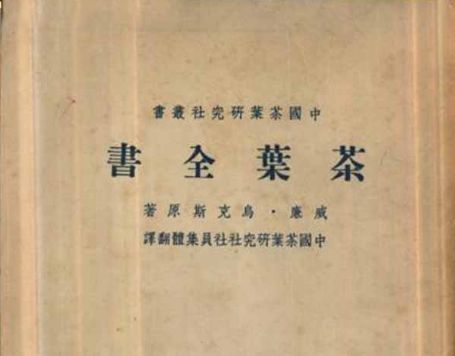
In 1876, Keemun black tea was successfully trial-produced on the basis of Lapsang Souchong black tea. Subsequently, Gongfu black teas from all over China also followed the Lapsang Souchong process, and gradually developed Dianhong black tea, Fujian black tea and other local Gongfu black teas.
-
Why is it called Lapsang Souchong Black Tea?
The term "Lapsang Souchong" black tea was first called BOHEA in Europe. According to legend, it is the Hokkien pronunciation of the place name of Wuyi. Black tea (artificial or smoked) disrupted the market, so it was named "Lapsang Souchong".
The so-called "Zhengshan" means what is produced in the real high mountain area. Its coverage is centered on Miaowan and Jiangdun Natural Villages in Tongmu Village, Wuyi Mountain, north to Shilong, Qianshan, Jiangxi, south to Baiyeping, Caodun, Wuyi Mountain, east to Da'an Village, Wuyi Mountain, west to Guangshiqian Qiankeng, and southwest to Shaowu Long Lake Guanyin Pit covers an area of 600 square kilometers. Most of them are now in the Wuyishan National Nature Reserve in Fujian. The soil is fertile, and the quality of the tea produced is unmatched.

"Souchong" refers to the variety of tea trees. Lu Tingcan's "Continued Tea Classics" contains "Suitable Records" and mentions: "Wuyi tea, the one on the mountain is rock tea, the one by the water is Zhou tea,...the best one is called Gongfu tea. After a lot of work, there are small species, which are named after the tree. Each plant is only a few, and it is rare."
-
Production of Lapsang Souchong
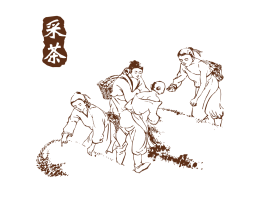
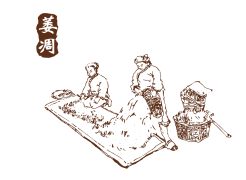
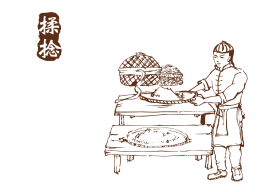
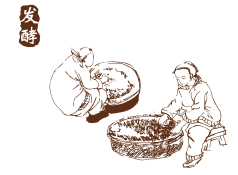
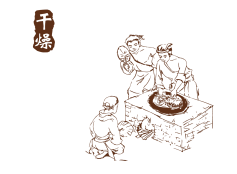
At Tongmu Pass in Wuyi Mountain, there are two wooden buildings named "Qinglou", which are factories specially used to make Lapsang Souchong black tea.
In the past, it was necessary to pick one bud and three or four leaves as raw materials for the production of Lapsang Souchong, and it was not picked in rainy days, dewy leaves, scorching sun, or rainy the day before. The tea trees in Tongmu Mountain are wild and mixed. Even the most skilled tea pickers can only pick back 10 kg of tea greens a day.
The picked fresh leaves are spread out on wooden boards or bamboo strips in an orderly manner, and the weather, temperature, humidity, and wind are used to distribute the water in the leaves, making the green tea soft and kneading into strips. Use masson pine wood to burn to control the temperature during withering. Every 30 minutes, the green tea is collected again and spread out again, so that each green tea can be spread evenly.
When 50kg of fresh leaves remove 20 kg of water, it is the best time to knead. Kneading is not only to shape the beautiful shape of tea, but also to destroy cells and accelerate oxidation.
Fermentation is the most critical process to form the characteristics of black tea color, aroma and taste. In the bamboo tea basket, cover with a damp cloth and wait for seven hours, the tea leaves will change from green to bronze, and the aroma will become more leisurely.
Passing the red pot is a unique process in Lapsang Souchong. The high temperature of 180 degrees prevents the tea leaves from continuing to ferment, and also enhances the aroma of the tea leaves and increases the aftertaste.
Next, the green tea is spread on the bamboo strips, and the masson pine is slowly burned in the underground fire stove. The pine smoke spreads to the drying room along with the cracks in the bricks. surround. The temperature evaporates the excess water in the green tea, and also injects the final smoky aroma into Lapsang Souchong. This Lapsang Souchong black tea made with masson pine smoke has a strong aroma of pine wood and an unforgettable sweet aroma of longan.
After more than ten hours, the traditional Lapsang Souchong black tea produced in Tongmuguan was made. Under the boiling water, the aroma of pine smoke mixed with longan and the seemingly floral and fruity aroma lingers on the tip of the nose. Drinking amber tea soup, a sense of vicissitudes from time rushes to the face, moist, warm, and sweet, as if walking into a brothel deep in the mountains and dense with rosin. The slow-smoked pine fragrance lasts for a long time, and it is still full of charm after brewing many times.
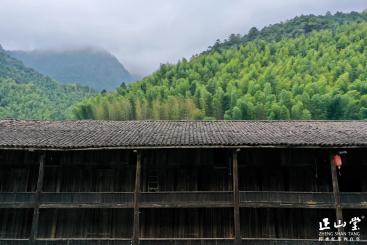

-
What is the difference between Lapsang Souchong and Waishan Souchong
The national standard GB/T13738 of Lapsang Souchong black tea points out that: Lapsang Souchong must use tea tree raw materials within a radius of 565 square kilometers centered on Miaowan and Jiangdun Natural Villages of Tongmu Village in the Wuyi Mountain National Nature Reserve. The black tea is made by traditional techniques, and has the fragrance of pine smoke and dried longan.
The difference between Lapsang Souchong and Waishan Souchong lies in:
-
Regional definition: The origin of Lapsang Souchong black tea is Tongmuguan in Wuyi Mountain. According to the "Chinese Tea Classic", "within Tongmu, there is Zhengshan". All the tea produced in Tongmuguan is called Zhengshan. The tea produced near Wuyi Mountain or other areas is called Waishan to distinguish the small species of black tea produced outside Tongmuguan.
-
Production process requirements: Lapsang Souchong is the ancestor of black tea, and it is also the most classic and traditional tea species in black tea. The real Lapsang Souchong black tea needs to be made from high mountain tea trees in Wuyi Mountain area, with traditional techniques and through masson pine Made by natural tobacco roasting process.
-
Differences in quality: Lapsang Souchong is a high-mountain tea with a special high-mountain flavor, mellow taste, and is resistant to brewing and storage. Most of the outer mountain Souchongs are low-mountain teas, with a thin background and not resistant to brewing.



